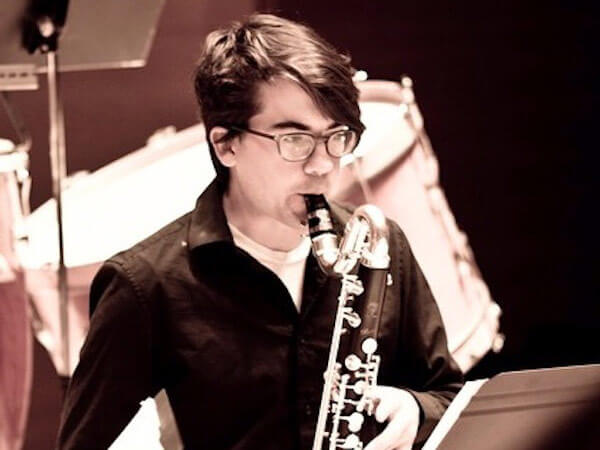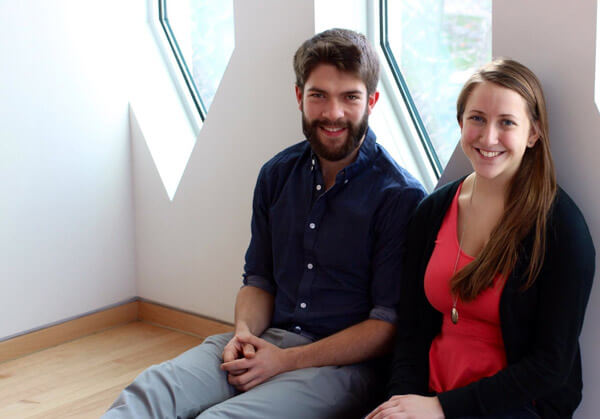Chartreuse ensemble is a tricoastal new music string trio formed by violinist Myra Hinrichs (Chicago), violist Carrie Frey (New York), and cellist Helen Newby (San Francisco) when they were students at Oberlin Conservatory. They are about to embark on a four-city January 2015 tour in which they will be joined by guest performers clarinetist Zachary Good, flutist Hannah Hammel, and bassoonist Ben Roidl-Ward. We asked them five questions about working and touring together and they all got in on the answers.
What are the challenges you face to keep the ensemble together and moving forward artistically with each of you on a different coast?
Helen Newby: The physical distance between us is definitely a serious challenge. A great deal of a chamber ensemble’s musical growth happens as a result of constantly playing and performing together. However, the fact that we all inhabit different corners of the country has allowed us to individually meet so many composers and musicians. The cities we collectively inhabit (New York, Chicago, San Francisco) each have pretty divergent musical climates. This exposure to a variety of different scenes has helped us to build an ever-expanding cumulative pool of awesome, unique collaborators all across the country. The list of individuals that we plan or hope to work with is continually growing.
What’s behind the upcoming tour — six shows, four cities, three programs, guest performers, etc.?
Myra Hinrichs: We have been fascinated by the idea of combining our trio voices with winds. So we asked composers David Bird and Katherine Young to adapt pieces of theirs for that combination, without knowing exactly what we would do with them. Then the invitation came to play at the Oberlin Winter Term Chamber Music Intensive as an ensemble-in-residence and we realized we could leverage that into a multi-city tour. Second on the tour is the Bop Stop in Cleveland, and then we’ll continue on to Chicago and three venues in New York City. These are cities with awesome new music scenes where we know a lot of people. So we’ll be sure to have some friendly faces in the audience and places we can stay for free. We tailored each program to the venue. In Oberlin, for example, we will focus on composers with Oberlin connections; in the tiny Taszo Espresso Bar in New York, we’ll be playing a program of duets, etc. Our guest performers, Ben, Zach, and Hannah, were in on this project from the beginning, which is great because they are some of the coolest people and best musicians that we know.
How do you go about commissioning so many new works?
Carrie Frey: Commissioning is the life-blood of a new music ensemble, but it is just a fancy word for “asking someone to write music for you.” Our commissioning often comes about naturally at parties, after concerts, or when we’ve worked with a composer in other contexts. Six of the works we’ll be playing on this tour were written (or adapted) specifically for us. Ryan Pratt‘s Spokes-Unspoken came out of a chance meeting at a TAK Ensemble show. I met Kurt Isaacson at a concert featuring two of his works in Oberlin. He had an idea for a trio piece that could fit into his “meat cycle:” as a family of civilian ghosts fades into the fog lights. Discussing a piece in person or via e-mail is essential. Each composer comes in with an idea of our strengths as a trio, but they also bring their own concept of what a string trio can be. So we get to try weird new things, which then become an integral part of “what we do.”

Clarinetist Zachary Good (photo by Aaron Holloway Nahum)
What can you tell us about the Katherine Young piece you’ll be playing?
Zach Good: Katherine Young‘s graveled crumbled strewn for string trio, clarinet, and bassoon is an aural-visual response to the construction of a grocery store/shopping complex behind her apartment in Chicago. The penetrating sounds of trucks, cranes, beeps, and machine tools, the occasional floor-shaking clangs, and the imminent obstruction of light and visibility outside her window impacted her daily home environment. A trio of video projections/scores, electronics (including field recordings from the site), and amplified ensemble depict this scene of construction, transformation, and obstruction. This is Young’s third iteration of the piece – the bassoon part, the most recent adaption, was originally written for oboe and then for soprano saxophone.

Bassoonist Ben Roidl-Ward and flutist Hannah Hammel (photo by Carina Wu)
And what work has David Bird adapted for you?
Ben Roidl-Ward and Hannah Hammel: David Bird’s pluck.divide.cut is a twisted take on the concept of harvest in modern society. Originally for string trio, flute, clarinet, and french horn, David has restructured the piece for our ensemble, replacing french horn with bassoon and expanding the ending. The piece contemplates the reaping of horseshoe crabs’ blue blood for Limulus amebocyte lysate, an important medical compound that the FDA uses to test for bacterial contamination in every intravenous drug and device it approves. These ancient creatures have about 30% of their blood “harvested,” causing many of them to die in the process. This harvest is represented musically by subdued “subaquatic” sounds mixed with violent, artificial metrical structures.
Chartreuse—Plus January 2015 Tour- January 7 at 8:00 PM: Clonick Hall at Oberlin Conservatory
- January 8 at 7:30 PM: The Bop Stop in Cleveland
- January 9 at 9:30 PM: Constellation in Chicago
- January 16 at 7:00 PM: Spectrum in New York City
- January 17 at 8:00 PM: Firehouse Space in Brooklyn
- January 18 at 8:00 PM: Taszo Espresso Bar in New York City





















